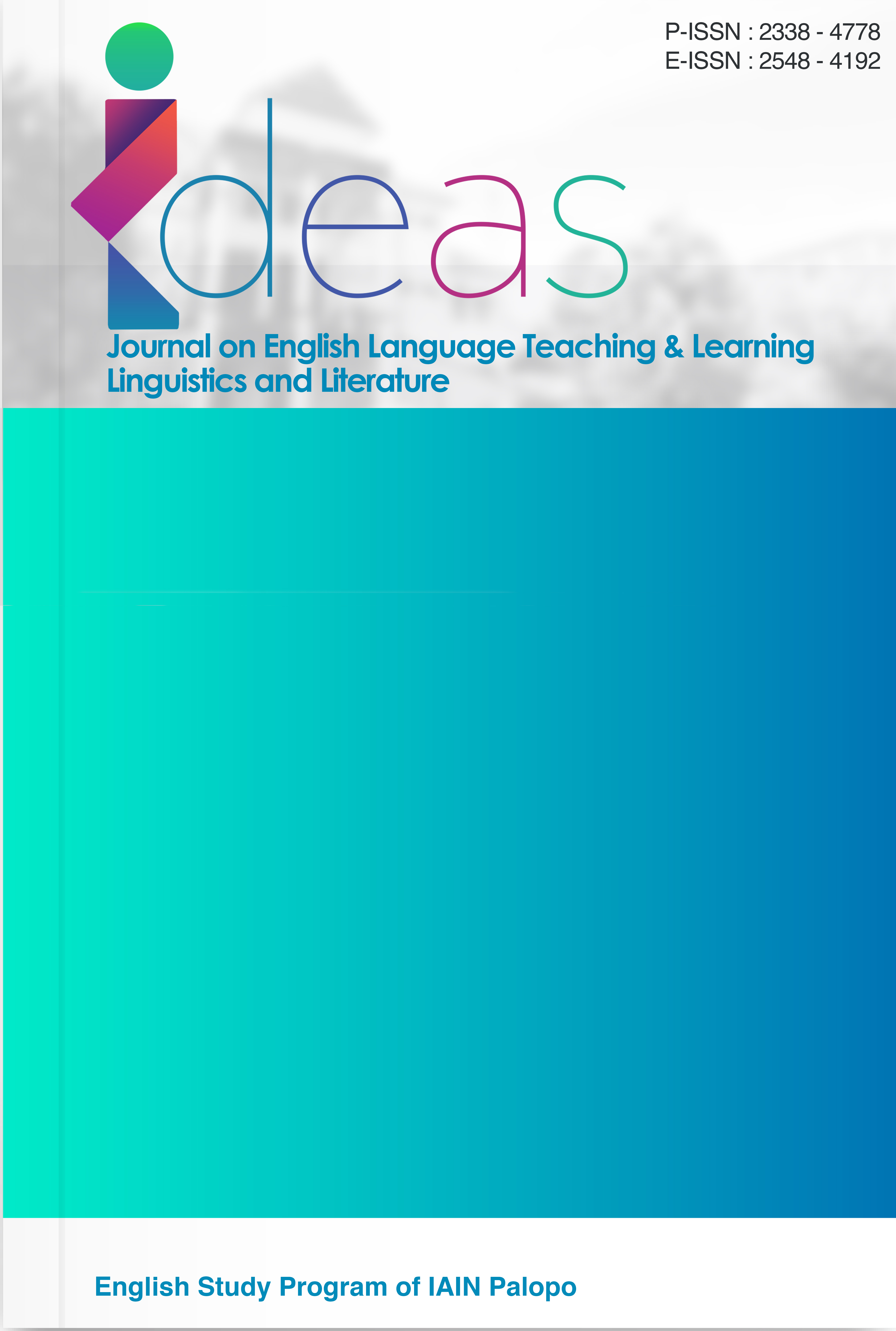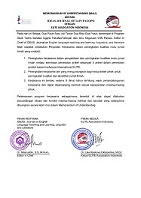Representation of Toxic Masculinity in Itisha Nagar’s Speech: A Critical Discourse Analysis
DOI:
https://doi.org/10.24256/ideas.v13i2.7986Keywords:
Critical Discourse Analysis, speech, van dijk, toxic masculinityAbstract
This study examines how toxic masculinity is constructed & contested in Itisha Nagar’s TEDx Talk, “From ‘Man’ to ‘(Hu)man)”. Employing Van Dijk’s Critical Discourse Analysis (CDA) framework, the research analyzes the transcript across three levels: macrostructure, superstructure, and microstructure. At the macrostructural level, the talk frames toxic masculinity as a systemic cultural problem rather than an individual flaw. The superstructure reveals how the speech is organized to contrast traditional and progressive views of masculinity. The microstructure highlights the ideological weight of linguistic choices such as pronouns, verbs, and evaluative adjectives. The dataset consists of a transcript of 2,102 words from a 13:34-minute talk available on the official TED YouTube channel. The findings demonstrate that Nagar frequently employs exclusion pronouns (e.g., they, them, their) to expose societal groups that reinforce toxic masculine norms, while simultaneously reframing masculinity through inclusive perspectives. Overall, the study shows how public discourse operates as a site of ideological negotiation, deconstructing patriarchal values and promoting models of masculinity grounded in empathy, equality, and shared humanity.
References
Anwary, A., & Istiadah, I. (2024). Exploring the complex narratives of toxic masculinity on the Instagram account @thegentlemanrising. Lire Journal (Journal of Linguistics and Literature), 8(1), 199–216.
Blair, C. (2016). Masculinity and mass shootings. Journal of Critical Masculinity Studies, 1(1), 1–12.
Connell, R. W. (2005). Masculinities (2nd ed.). Polity Press.
Creswell, J. W. (2014). Research design: Qualitative, quantitative, and mixed methods approaches (4th ed.). SAGE Publications.
Creswell, J. W. (2018). Qualitative inquiry and research design: Choosing among five approaches (4th ed.). SAGE Publications.
Ford, C. (2019). Boys will be boys: Power, patriarchy and toxic masculinity. Oneworld Publications.
Harrington, C. (2021). What is “toxic masculinity” and why does it matter? Men and Masculinities, 24(2), 345–352.
Heilman, B., & Barker, G. (2018). Masculine norms and violence: Making the connections. Promundo-US.
Istiada, I., & Anwary, A. (2024). Exploring the complex narratives of toxic masculinity on the Instagram account @thegentlemanrising. Lire Journal (Journal of Linguistics and Literature), 8(1), 199–216.
Mabrouk, H. (2020). “Boys don’t cry”: Gender norms and emotional repression. Journal of Gender Studies, 29(6), 731–742.
Masters, J. (2015). Rethinking masculinity: Integrity, strength, and suppression. Journal of Social Issues, 71(3), 445–460.
McGinley, A. (2018). The masculine dilemma: Toxic masculinity and sexual violence. Nevada Law Journal, 18(2), 671–700.
Mlamla, N. E., Dlamini, Z., & Shumba, K. (2021). Madoda Sabelani!: Engaging indigenous music in the fight against toxic masculinities and gender-based violence in South Africa: A critical discourse analysis. Acta Criminologica: African Journal of Criminology & Victimology, 34(3), 101–117.
Pettyjohn, M., Muzzey, F., Maas, M., & McCauley, H. (2019). #HowIWillChange: Engaging men and boys in the #MeToo movement. Psychology of Men & Masculinities, 20(4), 612–622.
Pittman, F. S. (1993). Man enough: Fathers, sons, and the search for masculinity. Putnam.
Rosida, I. (2022). Gendering the heart: Toxic masculinity and emotion suppression. Journal of Gender and Society, 14(2), 155–168.
Rosida, I., Nugroho, A., & Wijaya, W. (2022). Toxic masculinity in film narratives. Journal of Media and Culture, 11(3), 221–239.
Suprayogi, S., & Pranoto, B. E. (2020). The implementation of virtual exhibition project in English for tourism class for university students. Academic Journal Perspective: Education, Language, and Literature, 8(2), 87–97.
Suprayogi, S., Puspita, D., Nuansa, S., & Sari, K. (2021). The discursive construction of indigenous belief issue in The Jakarta Post. Language Literacy: Journal of Linguistics, Literature and Language Teaching, 5(2), 417–426.
Suprayogi, S., Pranoto, B. E., & Rosida, I. (2024). Language, ideology, and discourse analysis. Journal of Discourse Studies, 12(1), 33–49.
Van Dijk, T. A. (2000). Ideology and discourse: A multidisciplinary introduction. Pompeu Fabra University.
Veissière, S. P. L. (2018). Toxic masculinity: A cultural psychology perspective. Culture & Psychology, 24(3), 399–416.
Waling, A. (2022). Rethinking masculinity in advertisements and gaming. Journal of Cultural Studies, 36(4), 589–605.
Wijaya, W., & Nugroho, A. (2024). Unraveling the man: Toxic masculinity and cowboy culture in The Power of the Dog. JADEs Journal of Academia in English Education, 5(1), 145–164.
Wodak, R., & Meyer, M. (2015). Critical discourse studies: History, agenda, theory and methodology. SAGE Publications.
Bano, S., & Shakir, A. (2015). Use of personal pronouns in public speeches of Pakistani female politicians. Journal of Language, Linguistics and Literature, 1(3), 25–38.
Downloads
Published
Issue
Section
Citation Check
License
Copyright (c) 2025 Mutiara Ulil Zanna, Suprayogi

This work is licensed under a Creative Commons Attribution-ShareAlike 4.0 International License.
Authors retain copyright and grant the journal right of first publication with the work simultaneously licensed under an Attribution-ShareAlike 4.0 International (CC BY-SA 4.0) that allows others to share the work with an acknowledgement of the work's authorship and initial publication in this journal.
Authors are able to enter into separate, additional contractual arrangements for the non-exclusive distribution of the journal's published version of the work (e.g., post it to an institutional repository or publish it in a book), with an acknowledgement of its initial publication in this journal.
Authors are permitted and encouraged to post their work online (e.g., in institutional repositories or on their website) prior to and during the submission process, as it can lead to productive exchanges, as well as earlier and greater citation of published work (See the Effect of Open Access)




